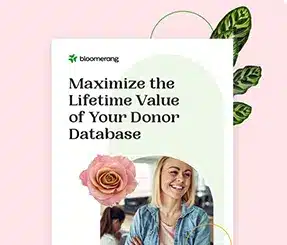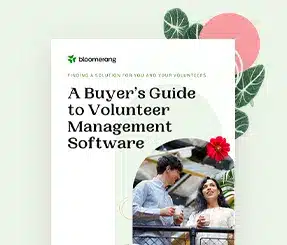Your CRM Isn’t Just a Tool—It’s a Mindset


Full Platform Overview Chat With Us



Full Platform Overview Chat With Us




Let me guess—someone sold your nonprofit a shiny new CRM and said it would solve everything. You signed the contract. Held the kickoff. Maybe even migrated a few records. And then came the real work: culture change.
That’s where I am right now—right in the thick of it.
At the Community FoodBank of New Jersey, I serve as Senior Director of Fulfillment, where I oversee the distribution of over 100 million pounds of food annually. But I’m also co-leading a major organization-wide CRM and ERP transformation—because I know that effective systems don’t just move product. They move people, relationships, and strategy forward.
This isn’t my first time driving CRM change. I’ve led successful implementations in past roles, and I’ve seen firsthand how the right system—backed by the right mindset—can unlock storytelling, accountability, and smarter engagement.
Here’s what I’ve learned to focus on—what we’re applying now—and what I believe any nonprofit can use as a compass.
We’re building our nonprofit CRM to do more than log names and dates. It should reflect our values—how we listen to community needs, respond with action, and build trust over time.
In my earlier CRM deployments, the turning point came when teams started thinking relationally. Instead of just asking, “What did we do?” they asked, “How did that interaction move the relationship forward?”
That’s the shift we’re nurturing now: from records to relationships, from tracking to storytelling.
In every CRM project I’ve led or advised on, we start with pain points—not product specs.
At CFBNJ, we asked:
This mindset helps us build not just for what exists—but for the future we want to lead.
You can’t expect people to use a system well if they don’t know what’s expected—or why it matters.
That’s why we’re developing shared definitions, team-level standards, and purpose-driven documentation. From my past experience, I know that these “small” choices—like defining what counts as an interaction—can make or break reporting later on.
A CRM isn’t just about what gets entered. It’s about what gets understood.
This is a mantra I’ve carried across organizations, and I’m helping embed it at CFBNJ.
Not in a punitive way—but as a principle of operational clarity. The CRM should be our memory—our shared narrative. When the whole team commits to it, cross-functional alignment becomes real, not theoretical.
And when someone moves on or changes roles? The knowledge stays.
Our ERP is aging. Our CRM is new. Middleware is bridging the two. It’s not perfect—but it’s purposeful.
We’ve taken the view that integration isn’t a one-time decision—it’s an ongoing posture. From past projects, I know that even partial connectivity creates momentum. The key is to connect what matters most first—and keep the system flexible for growth.
In every CRM project, the most powerful voices aren’t always on the org chart—they’re the ones in the room asking better questions.
I’ve made it a point to identify and elevate those team members early. They’re already influencing process design, helping build internal trust, and modeling the kind of mindset that makes CRM systems stick.
They’re not just users. They’re movement builders.
At CFBNJ, we’re in the midst of a multi-system transformation—but the philosophy is clear: CRM isn’t about tech. It’s about trust, visibility, and relationships that endure.
If there’s one thing I’ve learned across CRM projects, it’s this: success starts when you treat your system not as software, but as strategy. That’s how you align your team. That’s how you build for the long-term.
And that’s how you tell a better story—one field, one action, one relationship at a time.

Comments